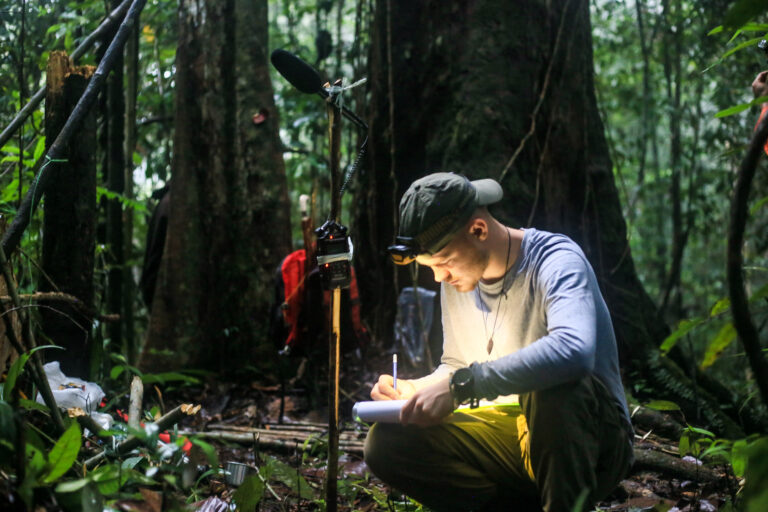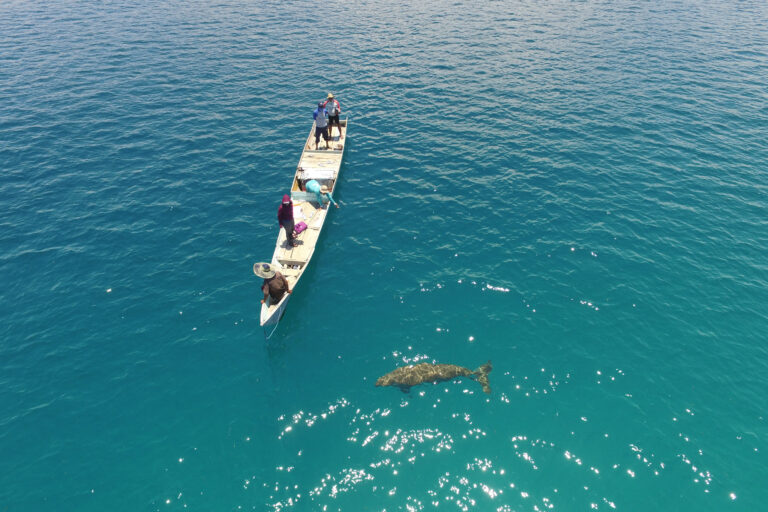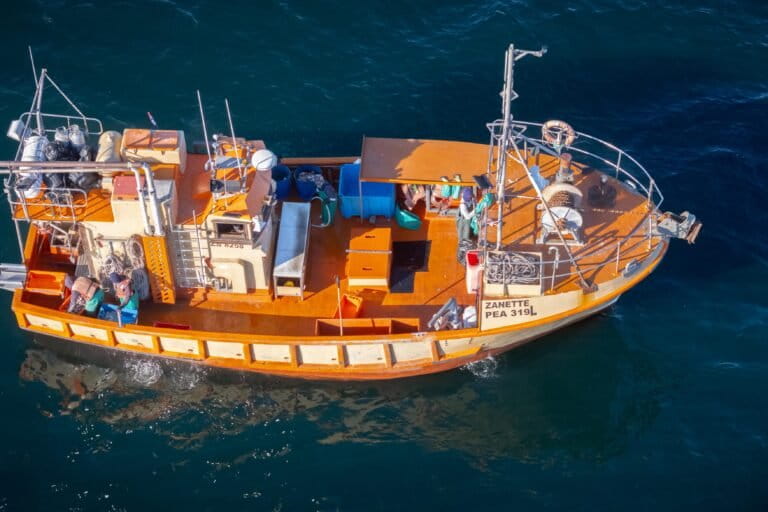- Brazil’s Paris Agreement target calls for a carbon emissions reduction of 37 percent by 2025, and 43 percent by 2030, compared to 2005 levels. These reductions are dependent on the nation’s ability to meet its forestry goals. Brazil’s vast forests are vital for carbon storage and for curbing the worst impacts of climate change.
- However, Brazil’s government is moving to relax environmental licensing regulations in order to fast track large-scale infrastructure projects, including industrial waterways, dams, highways and railways; and is pursuing a major agribusiness expansion — all of which could work to increase carbon emissions.
- In addition, new studies show that Brazil will likely fall well short of the billions in funding needed to meet the country’s ambitious forestry goals which were declared in 2015, just before the Paris Climate Summit.
- The continued curbing of Amazon deforestation is key to Brazil’s achievement of its Paris carbon cut targets, but recent news from the Amazon is bad: after years of decreased deforestation rates, forest loss in the Amazon is again on the upswing.
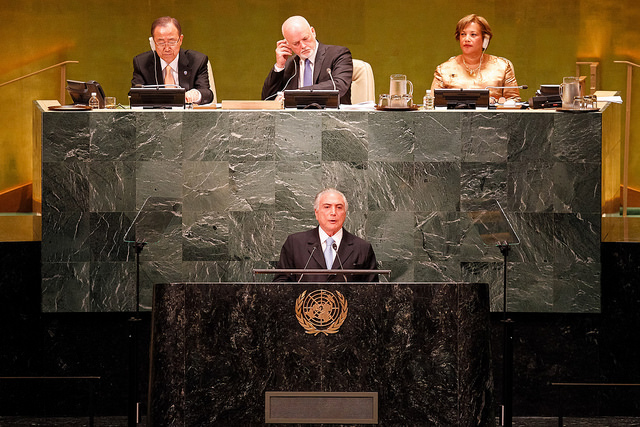
With the European Union’s parliamentary approval this week, and ratification by 74 nations responsible for more than 55 percent of the world’s carbon emissions, the landmark Paris Agreement on climate change will go into force on November 4, 2016.
Included among the signatories is Brazil, which ratified the agreement in September. But while important discussions and studies are underway to determine exactly how Brazil can achieve its carbon reduction targets, political events could be moving quickly in the opposite direction.
The Temer administration (which has solidified its power since President Rousseff’s impeachment) and a conservative Congress are seeking to pass laws to fast track the licensing of future infrastructure projects that — while possibly benefiting Brazil’s economy — could increase deforestation as well as greenhouse gas (GHG) emissions.
Meanwhile, new studies have shown that Brazil may lack the billions of dollars needed to achieve the forestry objectives that it set in November 2015 and that would allow it to fulfill its Paris carbon commitments.

Still, environmentalists are hopeful that the Paris Agreement will help the country focus on making a successful transition to a low-carbon economy.
Each of the Paris Agreement ratifying countries has set a target carbon reduction goal for itself, known as that nation’s Intended Nationally Determined Contributions (INDC). Brazil’s INDC goal is to reduce its GHG emissions by 37 percent in 2025, and by 43 percent in 2030, compared to 2005 levels.
Brazil commits to carbon cuts
“With the official adherence of the country [to the Paris Agreement], the next step is to create a national strategy that enables our goals and that will involve a dialogue with the states, municipalities and civil society,” Everton Lucero told Mongabay. He is the Ministry of Environment’s secretary of climate change and environmental quality. “We are currently preparing — along with the ministries of Agriculture, Finance, and Mines and Energy — the first drafts to guide this debate, particularly in the areas of agriculture, energy and forests.”
According to the secretary, Brazil will present the plan’s guidelines at the 22nd session of the United Nations Conference of the Parties (known as COP 22), to be held from November 7th to 18th in Marrakesh, Morocco.
“That same month, we will promote a national consultation to understand the concerns of the population in this area and, in the second half of 2017, we will have a definition of the financial instruments [needed to achieve] the low carbon economy,” said Lucero.

“The Temer government should be congratulated on upholding the Brazilian commitment to the climate agreement,” scientist Tom Lovejoy told Mongabay. He is a professor of environmental science and policy at George Mason University, a senior fellow at the United Nations Foundation, and a renowned Amazon researcher. Lovejoy also cautioned: “Efforts against a low-carbon economy, however, are inconsistent with the [Paris Agreement] ratification. The sooner the transition gets underway, the sooner the benefits of pioneering new energy approaches will accrue to Brazil.”
Congress at work
There are currently at least 14 bills moving through Brazil’s Congress that seek to weaken environmental laws, some of which, if passed, would likely hamper Brazil’s ability to meet its carbon reduction goals.
PEC 65/2012 is one of the most significant. It is a constitutional amendment that would drastically streamline the environmental licensing process for major public works projects. PEC 65, if approved, would abolish Brazil’s current rigorous licensing process, which evaluates and approves large infrastructure projects’ impacts at several stages. PEC 65 says that once a project contractor has merely submitted a single basic Environmental Impact Assessment (EIA) to the government, the project cannot be suspended or cancelled. The amendment is still moving through Congress.
Another bill, PLS 6/2016, proposed by Rio Grande do Sul senator Ana Amélia, says that areas planted with exotic species can be counted as Legal Forest Reserves. Besides going against the Brazilian Forest Code — which demands the maintenance of native forests in Legal Reserves — the measure, if signed into law, would facilitate deforestation and the creation of non-native plantation monocultures. Scientists have found that monoculture plantations do not serve as carbon sinks nearly as effectively as diverse native forests do.
Another new regulation was put forward in draft form by José Sarney Filho in May of this year when he became minister of the environment under then interim President Michel Temer. Sarney Filho’s proposal, which is being developed by IBAMA (Brazil’s environmental agency) and other offices and agencies within the Temer administration, would create a so-called “general law of environmental licensing”.

According to the ministry, the new law would reduce bureaucracy without diminishing environmental protections. The draft regulation still regards size and location of a project as part of the fundamental criteria for its evaluation for environmental licensing, while making some important concessions to the agricultural and industrial sectors.
An example of how the “general law of environmental licensing” would work: agribusiness that currently must submit a production licensing request that is evaluated and updated annually, would in the future only need to request such a license once, since the government would consider farming activities repeated regularly in the same area as a single undertaking. Such a measure would clearly reduce ongoing government oversight of environmental compliance. The proposed licensing changes would also remove the obligation of the licensing agencies to promote public consultation on the internet.
Under the new rule, environmental agencies would only have a 90-day period to acknowledge a licensing application, and if they don’t meet that deadline, the project can go forward. Agencies would also have less time to issue or deny a license — 12 months for a provisional license that requires an EIA, and six months for an installation license. Environmentalists note that these severe time limits would likely be insufficient to carry out thorough EIAs on complex public works projects.
A SEA change
If legislation is approved, a Strategic Environmental Assessment (SEA) would become a mandatory instrument of the new licensing process, supposedly taking over some of the function of an EIA. Simply put, the distinction between the SEA and the EIA is that the first analyzes the environmental impacts of a governmental plan, program or policy, while the second evaluates the environmental impacts of a specific project (a dam or road), which, if approved, allows an entrepreneur to move forward on building that project.
“The SEA is a [government policy and] planning tool of paramount importance, and it is necessary to reflect why it hasn’t yet been implemented in Brazil,” said Luis Enrique Sánchez, professor of the Polytechnic School at the University of São Paulo (Poli/USP). “I am in favor of its requirement, but it shouldn’t be limited to plans or programs from sectors whose projects are already subject to environmental licensing. The SEA should be directed to public policies whose social and environmental consequences are largely ignored until now, such as macroeconomic policies.”
Environmental management specialist Sánchez sees value in an SEA that would evaluate government policies for their environmental soundness, but he worries that a weak SEA could be problematic: “Does it help to [institutionalize] plans, programs and policies, or is it [merely] a report to be agreed to by a government agency as an approval test [for an infrastructure project in lieu of a thorough EIA]?”

He argues that linking the SEA to the environmental licensing process poses a risk, especially in Brazil, where there is a strong bureaucratic culture. The entrepreneur might reason this way: “If I follow the whole [SEA policy] procedure and do everything right, then I’m entitled to a license [to move forward with my project].’”
“If the SEA were implemented to facilitate the licensing of projects with high potential impact, our experience in the electricity sector suggests there’s a great chance of not fulfilling its role [of safeguarding the environment]. It’s been more than two decades that this industry incorporates — well or badly done — the so-called ‘environmental dimension’. Even then, highly controversial projects have been submitted and approved, with huge litigation problems and social conflicts.”
Instead of being used to potentially water down the environmental licensing process, Sánchez would like to see the SEA used in a broader policy context. As a former president and member of the International Association for Impact Assessment (IAIA), he draws attention to a number of important Brazilian public policies that aren’t submitted to any form of environmental review, but likely should be:
“Doesn’t the granting of subsidies to the auto industry cause environmental and health impacts?” he asks. “And what about the agricultural credit policy, which encourages deforestation and extensive livestock breeding? Nobody evaluates the potential consequences of the government’s [policy] actions before implementing them, and this is the kind of SEA we need. Not only are those [policy] impacts overlooked, but [so are] their ramifications. The general disregard [for policy impacts on the environment] enables multiple agents, public or private, to contribute to environmental degradation. The SEA [if] tied to environmental licensing misses this matter.”
Curbing deforestation — where will the money come from?
One of the most important roles Brazil can play in reducing global carbon emissions, and thereby the impacts of escalating climate change, will be to actively preserve and enhance its extraordinary forest resources, especially in the Amazon which currently serves as one of the world’s most critical carbon sinks.
The vastness of Brazil’s forests, with their carbon storage potential, means that “no other country comes close to Brazil’s importance to reversing the tropical forest loss trend,” noted a recent World Wide Fund for Nature (WWF) report.
That’s why at the end of 2015, just before the Paris Climate Summit, Brazil announced a series of ambitious 2030 targets for reducing its GHG emissions. To meet those targets, it would increase its share of renewable energy production (including hydropower) to 45 percent in the energy matrix (currently, it is 42 percent); achieve zero illegal deforestation; reforest and restore 12 million hectares (46,332 square miles) of forest; and recover 15 million hectares (57,915 square miles) of degraded pastures, while integrating 5 million hectares (19.305 square miles) of crop-livestock-forest.

However, the amount of money needed to achieve such an ambitious goal, or where it might come from, was, until recently, unknown. So the Brazilian Coalition on Climate, Forests and Agriculture (BCCFA), decided to crunch the numbers regarding Brazil’s forestry goals to create a funding estimate, and to determine how those funds might be generated. They recently delivered those figures to the government.
On their website, the Coalition which was launched just two years ago, describes itself as a movement formed by agribusiness entities, environmental and climate civil organizations, academics, industry associations and companies from the wood, cosmetics, steel, paper and cellulose businesses, “which came together to address the issues arising from climate change through the perspective of a low-carbon emissions economy.”
The coalition has a diverse membership, including organizations concerned with the environment ranging from WWF-Brazil, SOS Atlantic Forest, the Climate Observatory, Imazon, and the World Resources Institute (WRI), and companies and trade groups that include Cargill, Unilever, BASF, Monsanto and the Brazilian Sugarcane Industry Association (UNICA).
Three reforestation economic studies were commissioned by BCCFA, to be completed by two economic research institutions (and coalition members): the Choices Institute, and the Center for Sustainability Studies of the Getúlio Vargas Foundation (GVCes).
The Choices Institute provided one report, estimating the capital required to reforest 12 million hectares in the Atlantic Forest and Amazon biomes. The GVCes provided two reports: one determining what it would take to increase tenfold the sustainable forest management area in the Amazon, and the other looking at what would be needed to deploy low-carbon technologies for livestock in the Cerrado (Brazil’s savannah region).
Reforestation costs
The goal of the National Plan to Recover Native Vegetation (Planaveg) — to restore a minimum of 12.5 million hectares of forest by 2020 — was adopted by the Choices Institute study (rounded down by 0.5 million hectares).
Unfortunately, estimating funding for reforesting Brazil’s privately owned rural Legal Reserve Areas is challenging, since it is uncertain precisely how well property owners are delineating and maintaining these areas.
“Nobody knows for sure the liability of the country’s forest [Legal Reserve areas]. When the new Forest Code was established in 2012, several studies attempted to estimate the deficit, with results ranging from 17 million to 25 million hectares,” explained Shigueo Watanabe Jr., one of the coordinators of the Choices Institute study.

Brazil’s Forest Code requires that all privately owned rural properties maintain a percentage of land classified as a Legal Reserve area which is to be covered by natural vegetation that can only be exploited through sustainable forest management practices. Depending on the biome in which a rural estate is located, the size of its Legal Reserve can vary from 20 to 80 percent of the total land holdings.
According to the National Institute for Colonization and Agrarian Reform (INCRA), Brazil has 5.4 million rural properties, but 4 million of them don’t entirely follow the Legal Reserve rules. (One property, for instance, might be required to keep 100 hectares as a Legal Reserve, but only maintain 10 hectares.)
To determine the Legal Reserve area deficit, it’s crucial that Brazil complete all Rural Environmental Registries (CARs), the mandatory registration of rural properties. The CARs, when complete, will integrate all data on rural landholders’ properties, counting permanent preservation areas, Legal Reserve areas, and restricted use areas (such as wetlands), and record areas of native vegetation and where forest recovery is necessary.
“There’s still about 20 percent of [privately held rural] lands left to assess, and [we also must] check the accuracy of the calculations provided by the owners. What delays the work are people who don’t allow technicians to enter their properties, usually in the southern region, and those who register pieces of national parks and indigenous reserves as part of their property,” Watanabe told Mongabay.
Despite these uncertainties and obstacles, the Choices Institute consultant believes that the goal of reforesting 12 million hectares is achievable — though challenging: “It’s almost the size of England, which covers just over 13 million hectares, said Watanabe. “And depending on the reforestation model adopted, we could reach 8.5 billion new trees.”
According to the study by Choices Institute, reforestation investment costs could top US $9.6 billion, US $13 billion or US $16 billion to restore 10, 20 or 30 percent of designated deforested areas by 2030, respectively.
The potential revenue produced by sustainable timber sales on these restored lands by 2030, would be considerably less than the cost of reforestation: US $4 billion, US $5.6 billion, or US $7 billion, respectively. Tax collection could add US $1.2 billion, US $1.6 billion or US $2 billion to the funds needed for reforestation, and this massive tree planting project would create from 138,000 to 215,000 direct jobs.
Totaling up the revenue and tax figures, one sees that the reforestation expense would still exceed Brazil’s available funds by US $4.4 billion, US $5.8 billion, or US $4 billion, at the 10, 20, or 30 percent reforestation rates. So clearly, foreign investment would be needed to make up the difference.
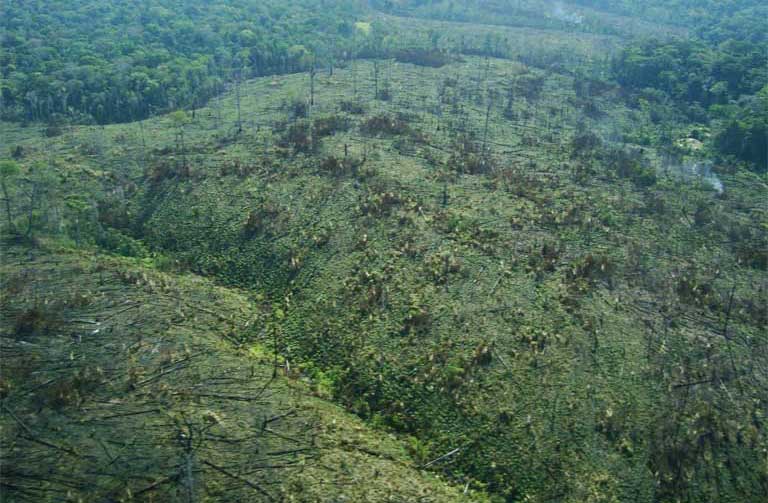
Achieving a tenfold increase in sustainably managed forests
The second Coalition study proposed a tenfold increase in the sustainable management areas located in public native forests of the Amazon — a difficult undertaking. Data provided by the Brazilian Institute of Geography and Statistics (IBGE) indicates that a staggering 80 percent of timber production in Brazil is illegal, with most of that timber directed to the domestic market, especially the state of São Paulo.
The remaining 20 percent is legally harvested, and includes “legal with certification” and “legal without certification” timber. Certified timber, which represents about 3 percent of total production, goes to international markets, especially northern Europe, with the Netherlands as a major buyer.
“The legal product without certification struggles to be economically viable because it’s hardly [ever] exported,” explained Annelise Vendramini, research coordinator for climate and sustainable finance at GVCes. “The [European] markets are willing to pay a higher price for certified wood.”
Obviously, if Brazil is to hit its carbon emissions targets it must tackle illegal logging head on, requiring a significant expenditure for monitoring and enforcement. Above all, it needs to alter the percentages: slashing the 80 percent illegal logging figure, and significantly upping the 3 percent certification figure.
Recovering degraded pasturelands
The third study assessed the potential for recovery of 30 million hectares of degraded pastures and the deployment of integrated systems for livestock and forests on 9 million hectares restricted to the Cerrado biome, in Brazil’s Midwest.
About 20 percent of Brazilian territory (180 million hectares) is occupied by pastures, and more than half of that shows signs of degradation (and 25 percent of those lands have low rates of occupancy).
If Brazil’s ambitious pasture recovery plan were implemented, it could reforest 45 million hectares, and would prevent carbon emissions totaling 66 million tons by 2030 according to the Coalition study.

But looking at the challenges involved, Vendramini of GVCes observed that: “The numbers show we will have difficulties adopting a sustainable system on a large scale, unless the government grants subsidies and tax incentives for farmers to adopt new technologies.
“[But] if Brazil discovers a way to finance this activity, it would generate a US $45 billion contribution to GDP in 2030, as well as US $3.7 billion in taxes, along with 9 million jobs,” she concludes.
Increasing deforestation vs. carbon cuts
While producing these new forestry reports is an important exercise — showing, for example, just how much investment would be needed to meet Brazil’s reforestation goals — reality is causing some additional problems. The country, which had for years cut its deforestation rate, has of late seen an upsurge.
Between 2004 and 2012, Brazil reduced its annual deforestation rate by 83 percent, from 27,772 to 4,571 square kilometers. However, the average annual deforestation rate for the past three years in the Brazilian Amazon has moved upward, with 6,207 square kilometers deforested in the year ended July 31, 2015, the highest level seen since 2011.
Also, in the summer of 2016, Brazil’s Minister of Agriculture and Livestock, Blairo Maggi, was in Washington DC presenting agribusiness investment opportunities to potential financiers. He touted Brazil’s current plans to dramatically expand infrastructure, with the building of industrial waterways, highways, railroads and ports.
It is hard to imagine how Maggi’s industrialized vision for Brazil, plus the current upswing in deforestation, along with the high costs of reforestation, and the government’s moves to weaken environmental regulations, will allow Brazil to achieve its Paris Agreement carbon reduction targets.
Unfortunately for the world, the United Nations notes that even if the current pledges made as part of the Paris Agreement are kept by Brazil and other nations, those promises are still too weak to limit a rise in global average temperatures of 2 degrees Celsius (3.6 degrees Fahrenheit) and to prevent disastrous global warming — with impacts potentially catastrophic for Brazil and the Amazon.








